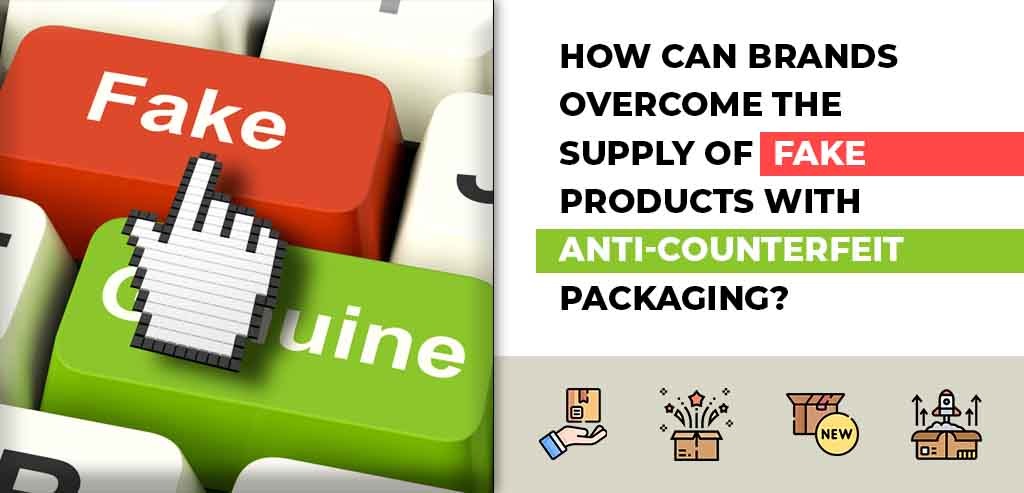Counterfeited products are present in every channel, especially in the e-commerce business. After the pandemic has hit us, the transactions have gone digital massively. Consumers now give preference to online platforms. On one side, technology has made things so easy by expanding the scope of more sellers’ options for consumers and a large target market for brand owners. On another side, counterfeiters have created challenges for the brands. E-commerce is taking the lead. There is a strong possibility that consumers will be bombarded with fake products, destroying the image and authenticity of the brands. The World Customs Organization states that counterfeit products bring in more than $650 billion every year.
Digital shopping is only going to rise with time. It’s high time that brands must start investing in anti-counterfeit measures and packaging. Even some brands have already started with this digital solution. Governments globally are implementing strict penalties and emphasizing the application of anti-counterfeit packaging to identify undetectable fakes. Be it a top multinational company, medium-size business, or startup, all of them are incorporating these sophisticated technologies into the packaging to overcome the problem of counterfeiting:
- Radio Frequency Identification tags (RFIDs) with microchips
- Security Seals
- Barcodes
- Security Ink and Printing
- Smart Labels and Holograms
- Mass Encoding
- Digital Encryption and Serialization
What makes anti-counterfeit packaging such a dynamic tool?
Enabling the anti-counterfeiting through packaging is a strong stand against counterfeiters. Most consumers use a smartphone today. By scanning the QR Code mentioned on the product packaging, they will be informed about the authenticity and decide whether to make a purchase or not. Such packaging also comes with a range of benefits such as customer data collection, digital warranty management, loyalty programs, etc.
The products that must incorporate anti-counterfeit packaging
The digital world is progressing. It continues to prosper in the future as well. When it comes to counterfeited products, luxury products, clothing, cosmetics, and sportswear strike the mind. If consumed, they can cause damage to health and safety. Let’s discuss a few examples:
- Wines and Spirits
The consumption of wines and spirits is pretty high in India. That’s why this industry is at the target of counterfeiters. They don’t leave the chance to earn massive profits through illegal ways. Thousands of deaths happen every year due to the consumption of fake alcohol in India. The use of anti-counterfeit packaging in wines and spirits can save many lives.
- Cosmetics
People usually take their skincare and hygiene quite seriously, the reason why the demand for cosmetics products has soared in recent times. There are high instances of cosmetics fraud that reinforce the need for anti-counterfeit cosmetic packaging to identify product authenticity. The FMI analysis states that the anti-counterfeit cosmetics packaging market may reach $50 billion with an 8.9% CAGR by 2027. More than 100 billion units of skincare anti-counterfeit packaging products will be sold by the year 2027.
- Cannabis
In India, many states have legalized the consumption of cannabis for medical or recreational purposes. But, it has also led to the supply of fake marijuana or cannabis that causes even more threats. Some brands have managed to put detailed information about the origin of cannabis on labeling. Unfortunately, others may not provide such information. To avoid the risk of counterfeiting, the focus of the brands should be on anti-counterfeit packaging solutions.
- Auto parts
The automobile industry has always been a target for counterfeiters. The complexity of their products allows counterfeiters to copy them easily. Anti-counterfeiting packaging provides a unique identity to each product through smart labels. The users can scan the product to verify its authenticity.
- Supplements
The fake health supplement is doing more harm than good. Its consumption can bring disastrous consequences to the consumers. The ASSOCHAM-RNCOS 2015 study says that around 60 to 70% of the dietary supplements supplied in India are counterfeited or unapproved. Anti-counterfeiting packaging can help producers and consumers overcome this concerning issue.
- Electronics
The retailers in the electronic industry are also victims of counterfeiting. To take a strong stand against these illicit practices, they are adopting anti-counterfeit packaging. The electronics anti-counterfeit packaging is expected to the worth $24.2 Billion by 2020, registering a CAGR of 10.1% from 2015 to 2020.
LetsVeriFy anti-counterfeiting solutions take the security and product authenticity of brands to the next level. With us, brands don’t have to worry about the damage caused by counterfeiters.

